 The phone rang Sunday afternoon. As soon as it did, I remembered that I had left the handset somewhere other than where it was supposed to be. After a brief search, I located it and saw the call was from my parents home, so I clicked the TALK button.
The phone rang Sunday afternoon. As soon as it did, I remembered that I had left the handset somewhere other than where it was supposed to be. After a brief search, I located it and saw the call was from my parents home, so I clicked the TALK button.
“Hello!” I said with sing-songy happiness.
“Do you know where your phone is?” asked the voice of my mother.
Taken aback, wondering how in the world she knew that I didn’t answer earlier because I couldn’t find the phone, I stumbled through saying, “Well, yeah… I had just left it… but… yes. I found it.”
“Oh really?” said she, knowingly.
At this point, I’m very confused. I had been watching a very intense Buffalo Sabres game, very much engrossed in that tight contest. Now my Mom is somehow slightly clairvoyant and even challenging my response?
“What do you mean?” I finally managed.
“I just got a call from a man named Wade… from your iPhone.” She let that hang for a minute, expecting a surprised response from me. She got it.
“Uh… what??” That was about it. 🙂
She explained that she had just received a call—from our iPhone—from a stranger named Wade, who explained to her that he had “found” this iPhone, and decided to scroll through the recent call list and try to ascertain to whom the phone belonged, and how to get it to them. She was wary of this very odd set of circumstances, and so got his name (which she later reported was an equally odd name) and said she would call me at home, which she then did.
The rest of the story follows…
Early Sunday morning, Jen informed me that she’d like to let me have a nice, quiet, non-work day at home, so she would take all six kids out for some shopping errands (including a stop at their favorite thrift store) while I stayed home and wrote or read until watching the Sabres game in peace, not needing to tend to many children’s needs every couple minutes. That was so nice and thoughtful! I knew it was really not something she enjoys doing, too, so it was clearly a gift she wanted to give to me. And so, I accepted.
They enjoyed a lunch together at Cici’s Pizza (ever been there? it’s fun!) and then found and purchased the hockey and skating equipment they were hoping to acquire, and then ended their excursion at the aforementioned favorite thrift store.
It was here that the adventure began.
Cam was tired by this point, and so was somewhat cantankerous. Biggest brother, Ian, offered to take him out to the van whilst the other shopped. He asked Mom if he could take the iPhone out with him, so he could listen to the Sabres game out there. Mom approved, and handed him the phone.
Here’s where the details get fuzzy. Ian does not recall where he put the phone down, nor for what reason he might have. Perhaps it even just slipped out of his pocket? Regardless, he somehow made it out to the van sans iPhone; and thus entered Wade into our family’s life.
At some point shortly after the misplacement of the iPhone, Wade and his girlfriend and her daughter, shopping at this very same favorite thrift store, came across this iPhone. (He did not tell me where it was discovered: floor, shelf, etc.) He decided to have a look at the recent calls list, rather than just hand it over to the store employees. (He and the two others with him were reticent to trust the employees, thinking they might decide to abscond with such a nice lost-and-found discovery.)
He told me later that while perusing the recent calls he saw ‘Grammy & Grandpa’ and figured, “Well they should know how to get this phone to its owner, if anyone does!”
He was right! (But it did freak out the Grammy a little bit…)
So he calls Mom, gives her the information, and she calls me. I called him back on his cell phone and assured him that the best option would be to just give it to the store employees, and Jen would get back there eventually, even if she didn’t know the phone was missing until they returned home.
Two important pieces here: one, I couldn’t contact Jen, since she didn’t have the phone, and two, we live about 35-40 minutes from this store. Ouch.
I need to back up once more. I’m not sure of the timing, but either before or after he called Grammy & Grandpa, Wade did alert the store employees that he was “looking for” Greg Campbell. So, at some point while they were shopping, Jen and kids heard a page for “Greg Campbell”. Jen told me later that she responded, but the store employees only told her that someone was “looking for” me, and nothing more. Nothing about the phone, and I don’t think they connected her with this man, Wade, either! Too funny…
So, after asking Wade to leave it with the store, I decided to use the Find My Phone feature to lock the phone remotely, mostly just because I could. It turned out to be very unnecessary, as probably less than ten minutes later, Jen was calling me from our iPhone.
That was the last interesting piece of the story as, Jen later recalled, “When I got the phone back, it said on the screen, ‘This phone has been lost.’ How did it know that?!” Ha! She realized it was something I had done, but it was a funny moment for them all, thinking that the iPhone was a very smart smart phone!
I called Wade back and thanked him for his help in getting the phone back to us. And relayed some of the details of the very interesting day to him as well, which made him chuckle.
All in all, we were reunited with our iPhone, and I believe Ian might now think twice before asking to be responsible for that device. 🙂

 I’m never one to do something “because that’s the way we’ve always done it”. My wife accuses me often of nearly the opposite: doing something differently simply for the sake of being different!
I’m never one to do something “because that’s the way we’ve always done it”. My wife accuses me often of nearly the opposite: doing something differently simply for the sake of being different!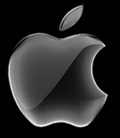 A long time ago I proffered an idea to Apple, that they could revolutionize the media industry by doing something with TV and movies similar to what they did with music. (Really. It was about the time the iTunes store came into existence. Before they offered video through the store, though. It was March of 2005.) I knew I was onto something when a few days later I received a response in serious “legalese” letting me know that Apple was grateful for my feedback, but could not accept unsolicited product ideas at this time.
A long time ago I proffered an idea to Apple, that they could revolutionize the media industry by doing something with TV and movies similar to what they did with music. (Really. It was about the time the iTunes store came into existence. Before they offered video through the store, though. It was March of 2005.) I knew I was onto something when a few days later I received a response in serious “legalese” letting me know that Apple was grateful for my feedback, but could not accept unsolicited product ideas at this time.
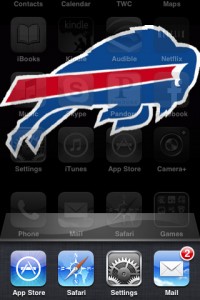 I already was aware that when you double-tap the home button on your iOS device you get to see the multi-tasking bar: all the apps that are currently open. What I didn’t realize—and this is the very important part—is that every app you’ve ever opened (and not intentionally shut down) stays open for the rest of eternity. It doesn’t matter if you power down and restart the phone. The App will relaunch itself, ready for your next command.
I already was aware that when you double-tap the home button on your iOS device you get to see the multi-tasking bar: all the apps that are currently open. What I didn’t realize—and this is the very important part—is that every app you’ve ever opened (and not intentionally shut down) stays open for the rest of eternity. It doesn’t matter if you power down and restart the phone. The App will relaunch itself, ready for your next command. Just like on any home screen, hold your finger on any app icon in the multi-task bar for one second and they all start their little app-changing dance. Except this time, instead of the little black “x” to remove the app from your device, you’ll see a red minus. When you click this, the icon disappears, and the app has been shut down! Anything else is like closing the window, but not quitting the application. Ever. And never restarting your device.
Just like on any home screen, hold your finger on any app icon in the multi-task bar for one second and they all start their little app-changing dance. Except this time, instead of the little black “x” to remove the app from your device, you’ll see a red minus. When you click this, the icon disappears, and the app has been shut down! Anything else is like closing the window, but not quitting the application. Ever. And never restarting your device.

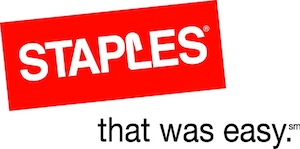 Today I stopped at
Today I stopped at 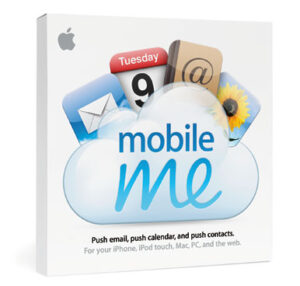 They also said that, though there is no timeframe specified, it was said to be “sooner than later… depend[ing] on certain facilities going operational.”
They also said that, though there is no timeframe specified, it was said to be “sooner than later… depend[ing] on certain facilities going operational.”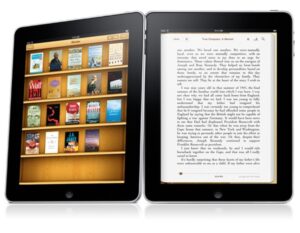 I went in really wanting to see what books looked like and felt like on the iPad. I love the idea of digital books, but haven’t ever found a way that makes them enjoyable to see, read, and feel/touch. The iPad promised it would do that, and, I do believe it does. (Again, I have not actually used one, as I don’t own one yet. My opinion on this could change if I were to read a book or two on the iPad.)
I went in really wanting to see what books looked like and felt like on the iPad. I love the idea of digital books, but haven’t ever found a way that makes them enjoyable to see, read, and feel/touch. The iPad promised it would do that, and, I do believe it does. (Again, I have not actually used one, as I don’t own one yet. My opinion on this could change if I were to read a book or two on the iPad.) In the olden days, Grandpa would read the newspaper every morning to catch up on the latest local, national, and world news. Our parents’ generation tuned their TV sets to the national news from their favorite of the three broadcast networks:
In the olden days, Grandpa would read the newspaper every morning to catch up on the latest local, national, and world news. Our parents’ generation tuned their TV sets to the national news from their favorite of the three broadcast networks: